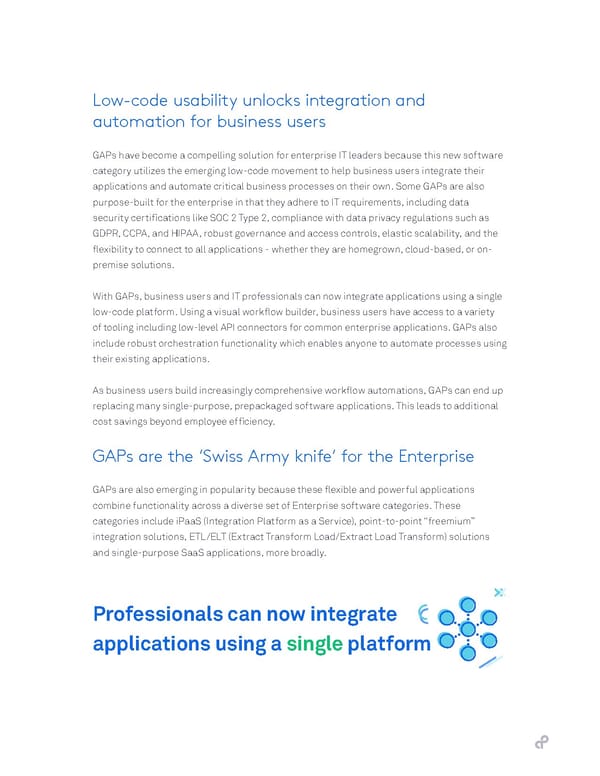Low-code usability unlocks integration and automation for business users GAPs have become a compelling solution for enterprise IT leaders because this new software category utilizes the emerging low-code movement to help business users integrate their applications and automate critical business processes on their own. Some GAPs are also purpose-built for the enterprise in that they adhere to IT requirements, including data security certifications like SOC 2 Type 2, compliance with data privacy regulations such as GDPR, CCPA, and HIPAA, robust governance and access controls, elastic scalability, and the flexibility to connect to all applications - whether they are homegrown, cloud-based, or on- premise solutions. With GAPs, business users and IT professionals can now integrate applications using a single low-code platform. Using a visual workflow builder, business users have access to a variety of tooling including low-level API connectors for common enterprise applications. GAPs also include robust orchestration functionality which enables anyone to automate processes using their existing applications. As business users build increasingly comprehensive workflow automations, GAPs can end up replacing many single-purpose, prepackaged software applications. This leads to additional cost savings beyond employee efficiency. GAPs are the ‘Swiss Army knife’ for the Enterprise GAPs are also emerging in popularity because these flexible and powerful applications combine functionality across a diverse set of Enterprise software categories. These categories include iPaaS (Integration Platform as a Service), point-to-point “freemium” integration solutions, ETL/ELT (Extract Transform Load/Extract Load Transform) solutions and single-purpose SaaS applications, more broadly. Professionals can now integrate applications using a single platform
 IT Buyers Guide Page 4 Page 6
IT Buyers Guide Page 4 Page 6